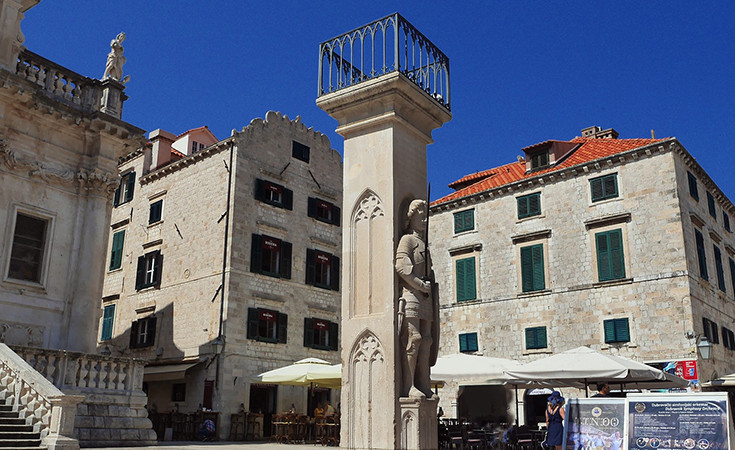
Orlando’s Column is located on the Stradun, in front of the Sveti Vlah church, where a pillory once stood. It depicts a medieval knight carrying a sword and a shield. It was designed by Italian master Bonino di Jacopo da Milano around the year 1417, and is the oldest preserved sculpture in Dubrovnik.
Many lives were ended prematurely at the spot as a warning to all who might want to do something illegal or harmful to the Republic of Ragusa. The spot is also where many floggings and hitting of transgressors over the face with hot objects took place as punishment for their deeds. In addition to this, the column also served as a place from which proclamations and important news were transferred to the public.
The people of Dubrovnik also had certain use of the column. The knight’s arm, for example, served as a unit of measurement, called “lakat“ (translated as elbow), which measured 51,2 centimeters. The flag of The Republic of Ragusa used to be positioned at the top of the column, symbolizing the city’s independence, but it was removed by the French after they had taken over the city.
The column was taken down by strong winds in 1825, but it was returned to the square in 1878, this time turned towards the north. Due to the fact that a flag is positioned on a high pole on top of Orlando’s Column, cracks appear due to the strong wind that is always hitting it. The damage inflicted on the pillar is not only natural, but sometimes it is inflicted by people. For example, the sword of the knight is often turned upside-down, so the sword that can be seen on the pillar today is, in fact, a replica.
Today, when the Dubrovnik Summer Games Festival is organized at the square, a flag with the inscription “Libertas“ (Freedom) is placed in its spot. During the day of Saint Vlah, a flag depicting the saint is put at the top of the column.
In medieval times, the fountain had religious significance as well. It was used exclusively by Christians, whereas a Jewish fountain was located nearby, which is no longer there, for the Jewish population to use.
Author of the text:

Ana Lazarević - our correspondent for Dubrovnik
Contact: [email protected]